I went on a sailboat in the Great Barrier Reef that calls itself a floating hostel. I slept terribly but it was the best $300 I spent in Australia.
Monica Humphries

The author spent one night on the Rum Runner sailboat that ports in Cairns, Australia.Monica Humphries/Insider
- I spent one night on the Rum Runner, a 65-foot sailboat that ports in Cairns, Australia.
- The boat calls itself a floating hostel that sleeps 18 people on trips to the Great Barrier Reef.
In June, I set out to the Land Down Under. Given that I was traveling more than 8,000 miles from my home in Denver, Colorado, there was one thing I couldn't miss — a dive in the Great Barrier Reef.
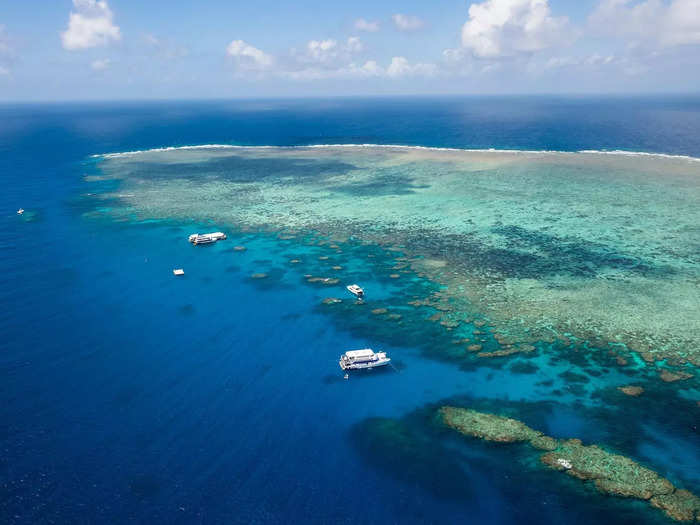
The Norman reef in Great Barrier Reef, Australia. Max shen/Getty Images
The Great Barrier Reef is the world's largest coral reef, one of the seven natural wonders of the world, and home to thousands of species of marine life, according to the Great Barrier Reef Foundation.
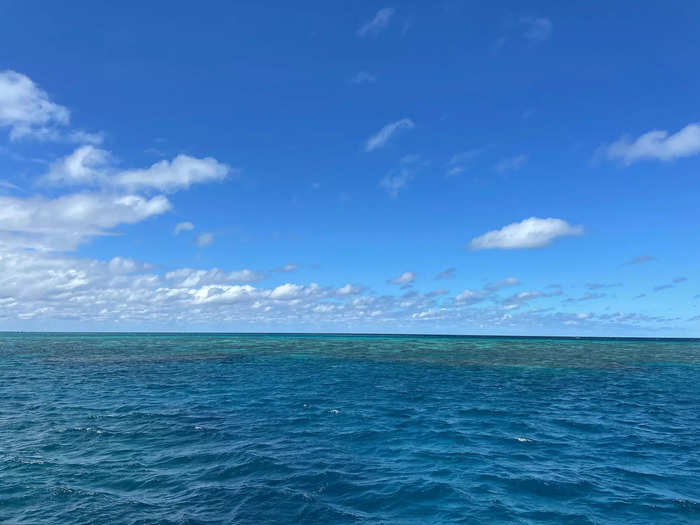
A reef in the Great Barrier Reef. Monica Humphries/Insider
Source: Great Barrier Reef Foundation
It's dotted with 3,000 individual reef systems, according to the Great Barrier Reef Foundation, and spans nearly 1,500 miles along the coast of Queensland, Australia.
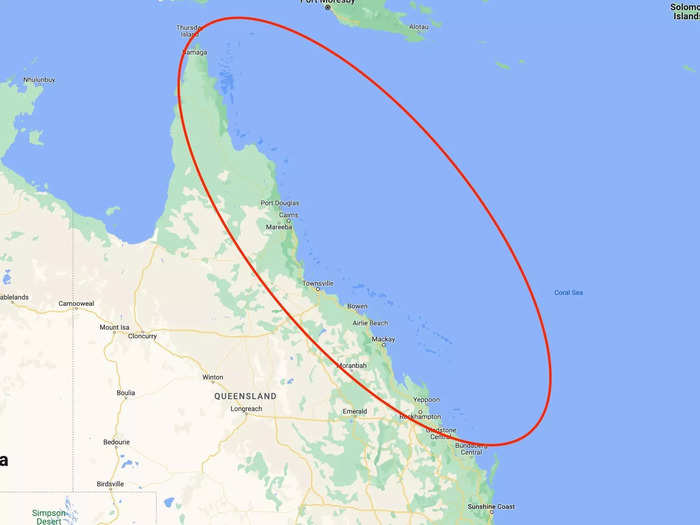
A Google Maps image of the coast of Queensland, Australia. Google Maps
Source: Great Barrier Reef Foundation
For many scuba divers, it's a dream destination with the chance to see new species and explore a grand underwater world. The reef has remained at the top of my bucket list since I was scuba certified in 2018.
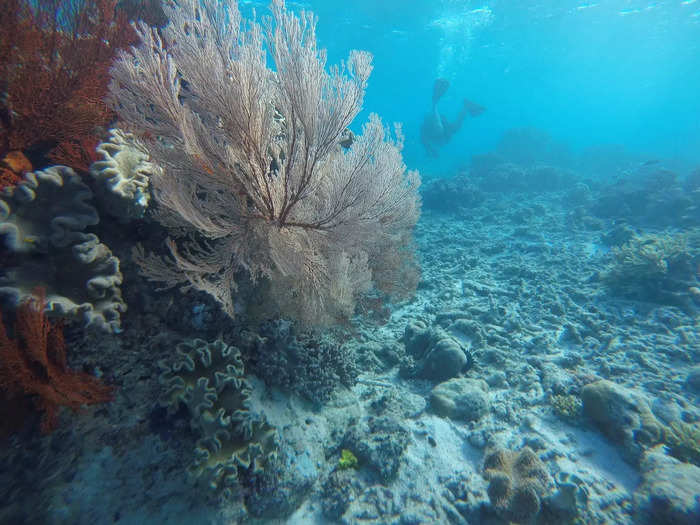
A view of the author and her dive buddy in the Great Barrier Reef. Monica Humphries/Insider
And I'm not the only one. Before the COVID-19 pandemic, over 2 million people visited the Great Barrier Reef each year, according to Great Barrier Reef Marine Park Authority.
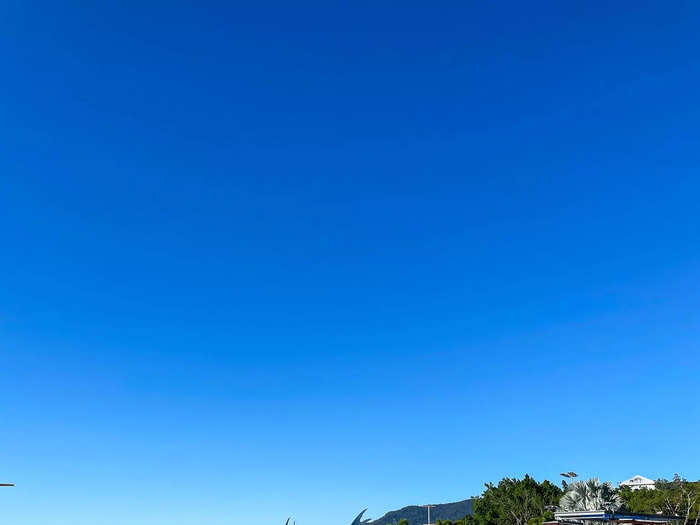
Australians and tourists at a community pool in Cairns, Australia. Monica Humphries/Insider
The desire to explore the natural wonder has only increased in recent years. Due to climate change, over 50% of the shallow water reefs have experienced coral bleaching, which is when coral expels the algae living in its tissue, according to the Great Barrier Reef Foundation. As Insider previously reported, at the current rate of coral bleaching, the reef will be gone by 2050.

A branching staghorn coral is completely bleached during the 2017 coral bleaching event on the Great Barrier Reef. Brett Monroe Garner/Getty Images
Source: Great Barrier Reef Foundation, Insider
So for my 10-day trip to Australia, getting to the Great Barrier Reef was a must. And if I was going to visit the fragile ecosystem, I wanted to avoid mega cruise ships and join a small diving trip.
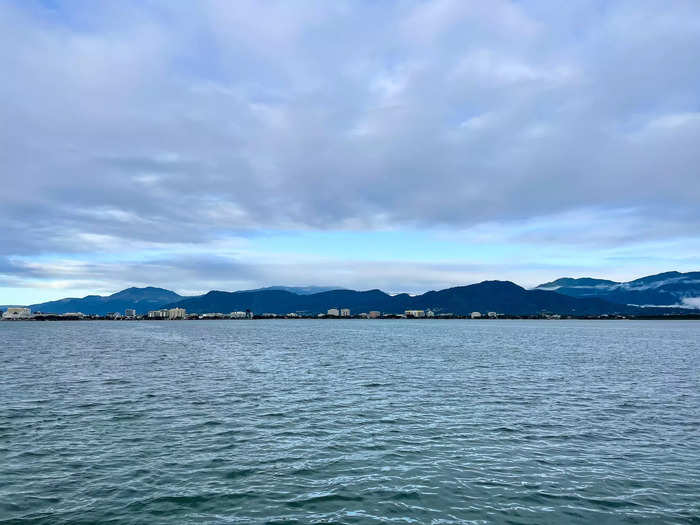
A view of Cairns, Australia, from the ocean. Monica Humphries/Insider
I planned four days in Cairns, Australia, which is considered the gateway to the Great Barrier Reef, and scoured diving options. I quickly learned that I could spend anywhere from an afternoon snorkeling to weeks diving on a cruise.
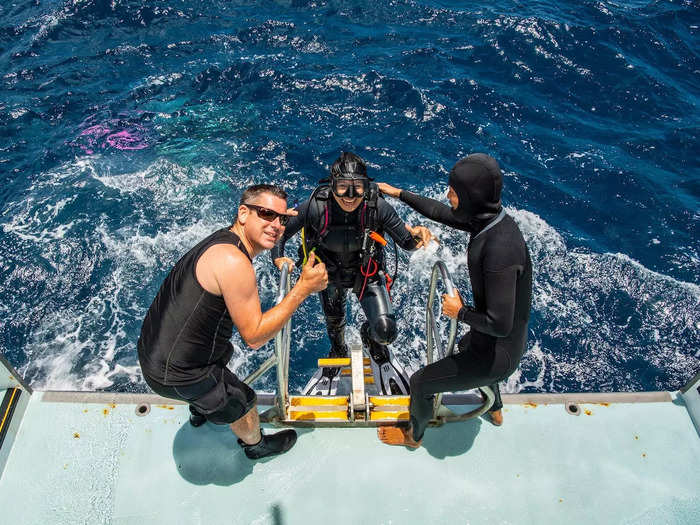
A diver climbs onto a boat. Cavan Images/Getty Images
An afternoon trip didn't feel long enough to explore one of the world's seven wonders. Meanwhile, most of the multi-day cruises were already full.
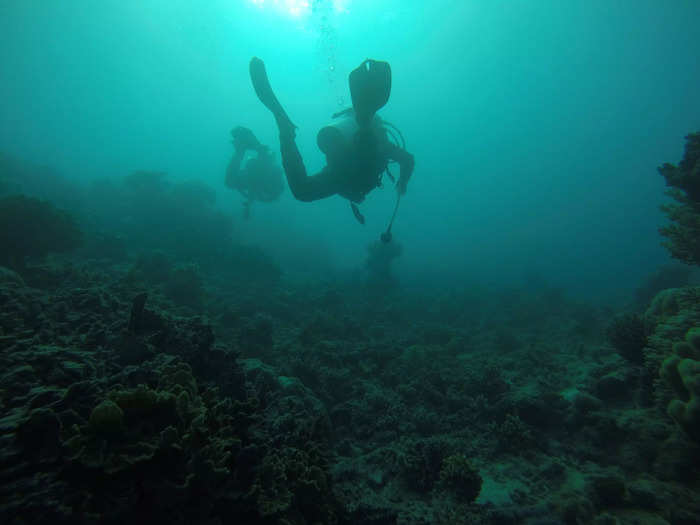
Divers in the Great Barrier Reef. Monica Humphries/Insider
Then, I found the Rum Runner. The one-night, two-day sailboat excursion offers six dives at four different reefs. The 65-foot motor sailboat sleeps 18 people, including diving instructors and sailboat captains.
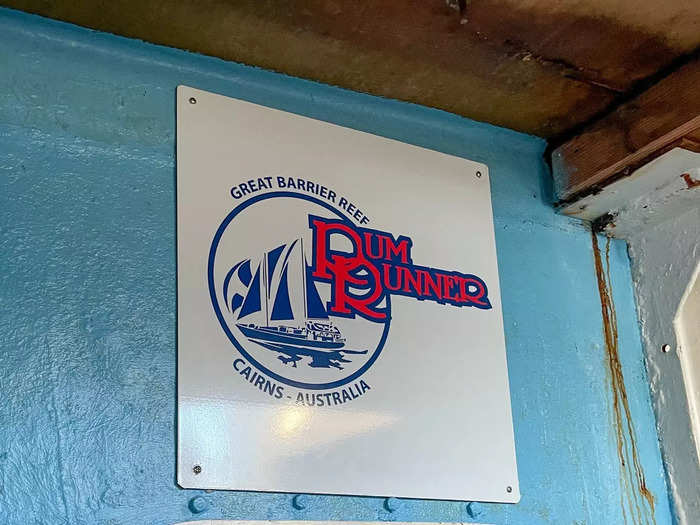
The Rum Runner logo. Monica Humphries/Insider
It was a deal I couldn't pass up. For $300, I would have access to scuba gear, a bed for one night, and warm meals. The other multi-day diving trips I spotted on Liveaboard, a website for booking multi-day diving cruises, cost hundreds of dollars more.
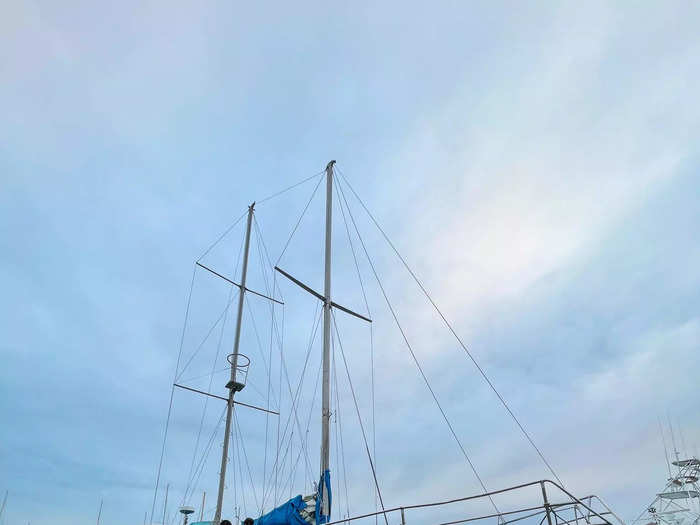
The Rum Runner sailboat. Monica Humphries/Insider
Source: Liveaboard
My only hesitation was reading that the sailboat is described as "the equivalent of a multi-share hostel, just on water" on the Rum Runner's website. After a night in Sydney's lowest-rated hostel and another sleepless night at a party hostel in Cairns, I hoped the Rum Runner would be a turning point from my previous negative experiences at other Australian hostels.
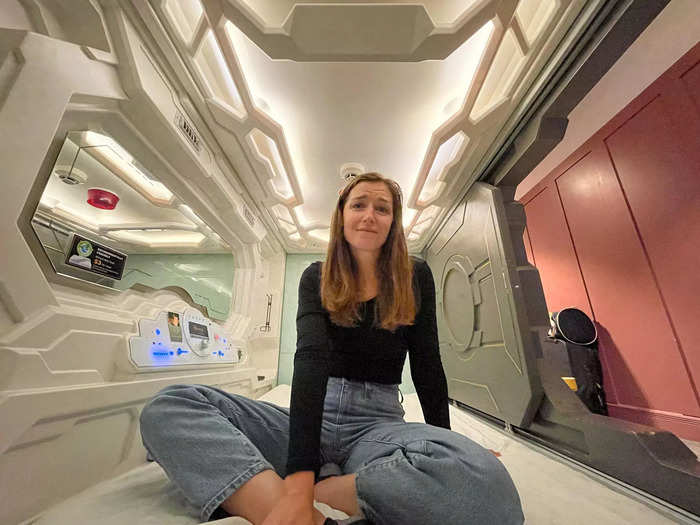
The author at a hostel in Sydney, Australia. Monica Humphries/Insider
So when nonstop rain magically cleared on the morning of my two-day diving trip, I took it as a positive omen for the adventure ahead.
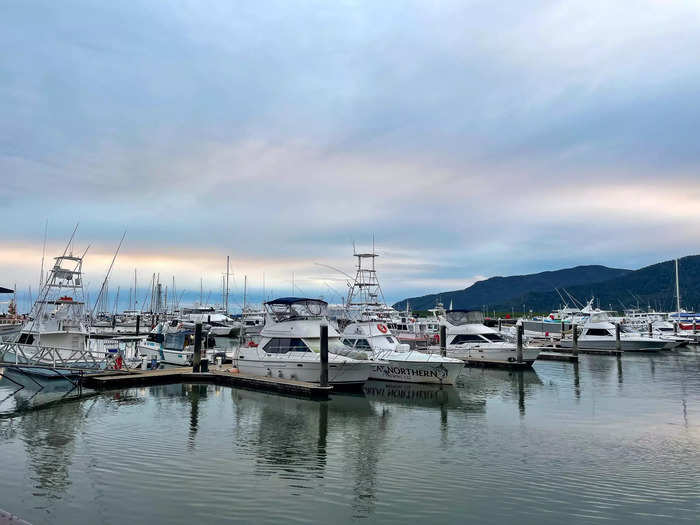
Boats ported in Cairns, Australia. Monica Humphries/Insider
I walked to the pier in Cairns where the Rum Runner was moored. Slowly, a stream of 12 other people arrived. Together, the group of strangers chatted on the boat's deck while we waited for instructions from our captain.
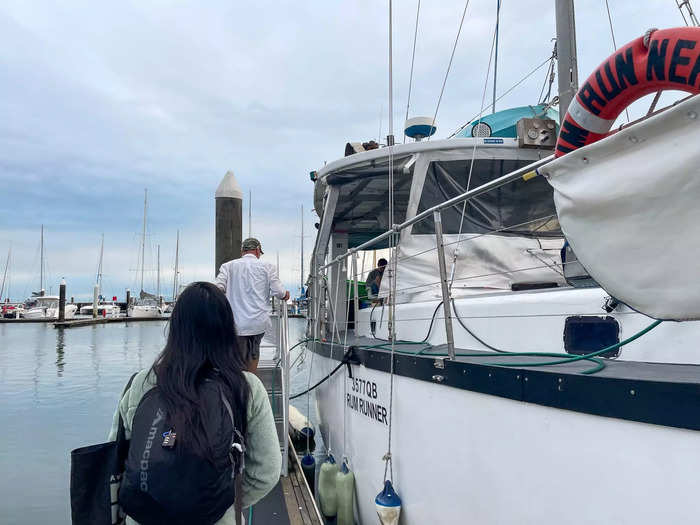
Passengers board the Rum Runner. Monica Humphries/Insider
Each passenger was assigned a bed on the 65-foot ship. As people grabbed their backpacks, suitcases, and overnight bags, I joined them down below in the cabin.
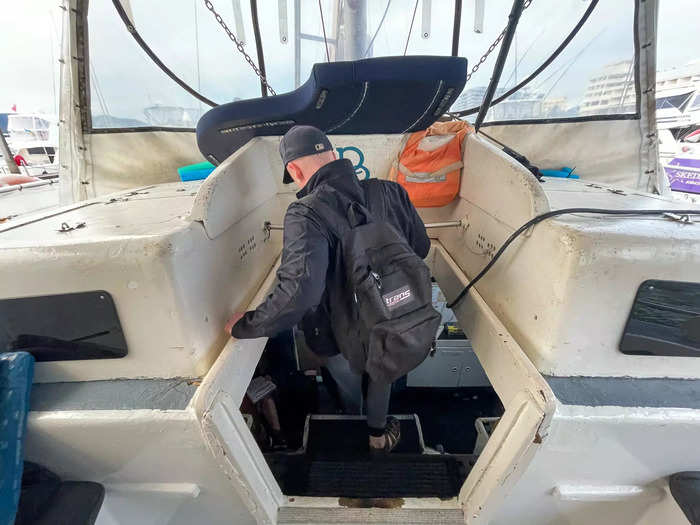
A passenger descends into the sailboat. Monica Humphries/Insider
Below the deck was one long room. There were sets of bunk beds creating a total of 18 single beds, which were assigned by group size. Privacy only came from cloth curtains. The ship also had a galley, where our captains cooked meals and prepared snacks.
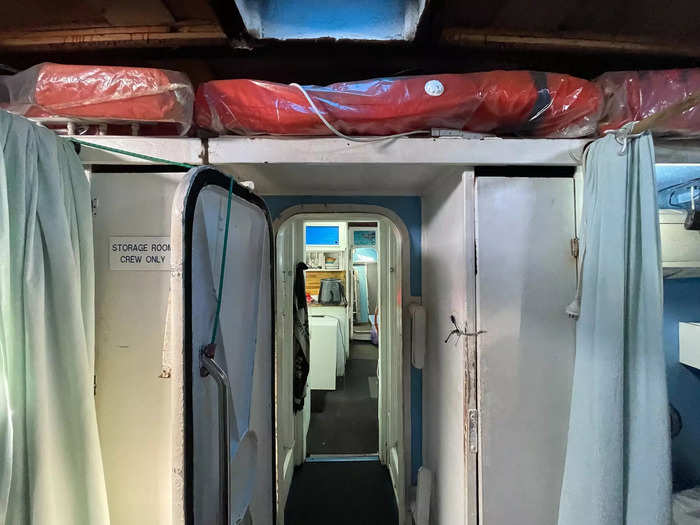
A doorway in the Rum Runner. Monica Humphries/Insider
I was assigned a bottom bunk near the staircase that led to the ship's only deck. When I saw my bunk, I immediately thought "floating hostel" was a spot-on descriptor as it reminded me right away of one.
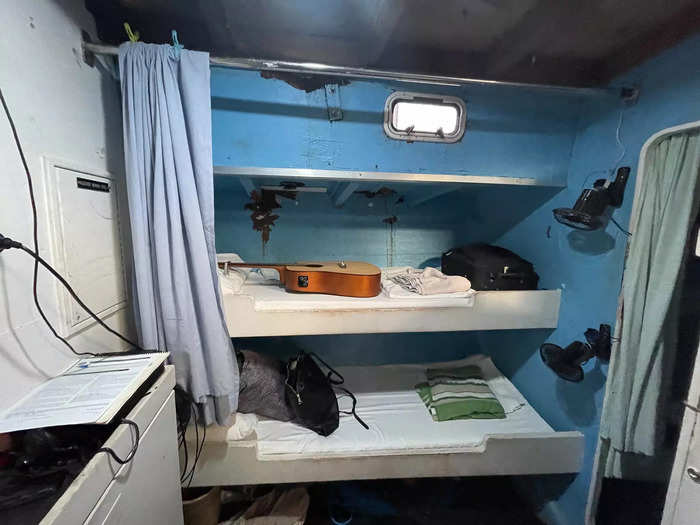
The author's bed on the Rum Runner sailboat. Monica Humphries/Insider
I thought the open layout and minimal storage space felt similar to the eight-bed party hostel where I spent the previous night in downtown Cairns.
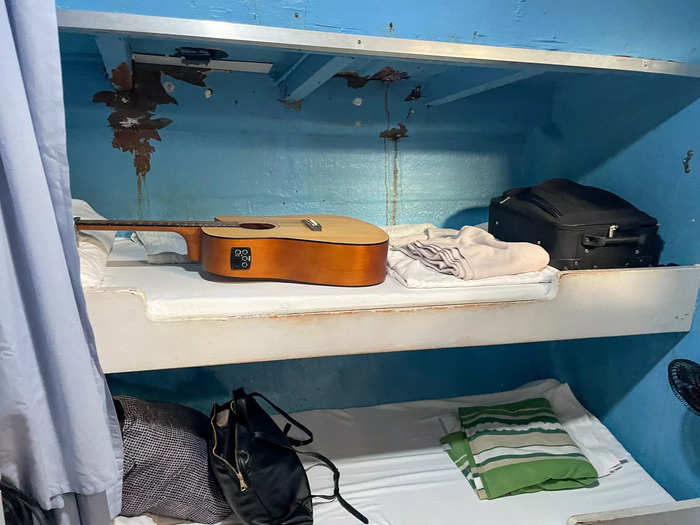
Two beds on the Rum Runner sailboat. Monica Humphries/Insider
My bed's curtain, which I'd later be thankful for since the cabin didn't get completely dark at night, didn't reach all the way to the bottom of the lower bunk. A small fan was also clipped to each bed, which was another amenity I was later grateful for when the boat's engines and AC shut off at night and my space got warm.

Each bed had a small fan. Monica Humphries/Insider
Across from my bunk bed were two more beds.
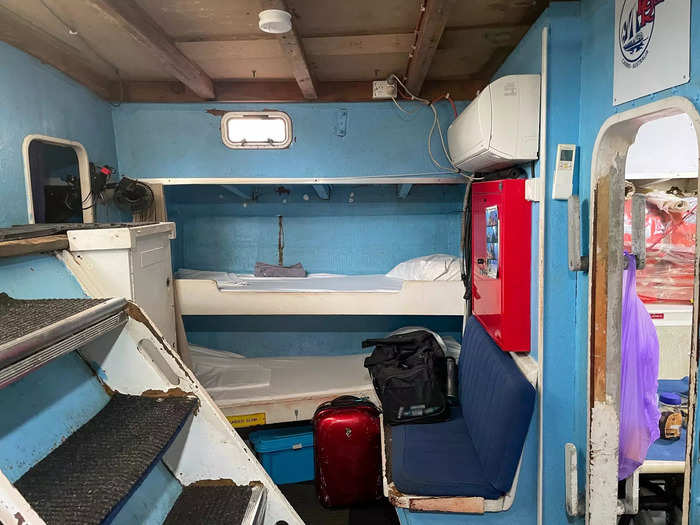
Two beds on the Rum Runner sailboat. Monica Humphries/Insider
Attached to my bedroom area were two other sets of bunk beds located toward the back of the ship. Similarly, their only privacy was a curtain.
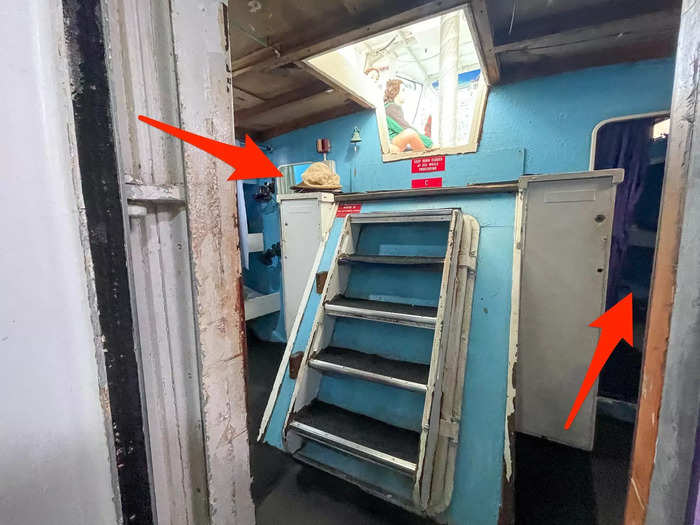
Arrows point to where there were two other small rooms. Monica Humphries/Insider
In the heart of the ship was the galley. Throughout the two days, while we dove, our captains would be in the kitchen cooking up included meals and snacks. Soda and beer were also available for purchase.
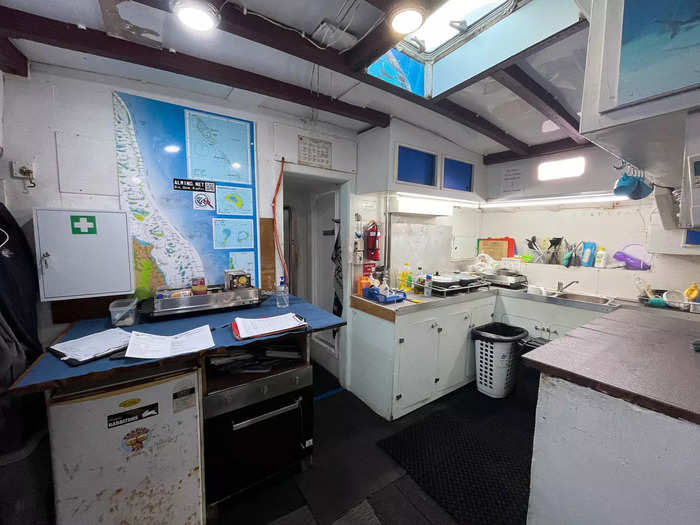
The kitchen on the Rum Runner. Monica Humphries/Insider
In the kitchen, I spotted an impressive array of gadgets, utensils, and appliances. There was an oven, toaster, stacks of pots and pans, hot plates, slow cookers, enough utensils, plates, and cups for 20 people, and, of course, food for two days.
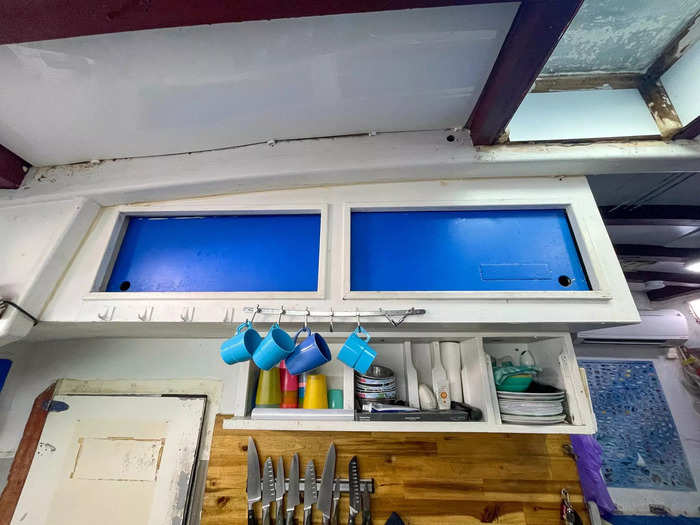
Kitchen storage on the Rum Runner sailboat. Monica Humphries/Insider
Across from the kitchen were more bunk beds. Two were used for sleeping and two had been transformed into storage for life jackets and personal belongings.
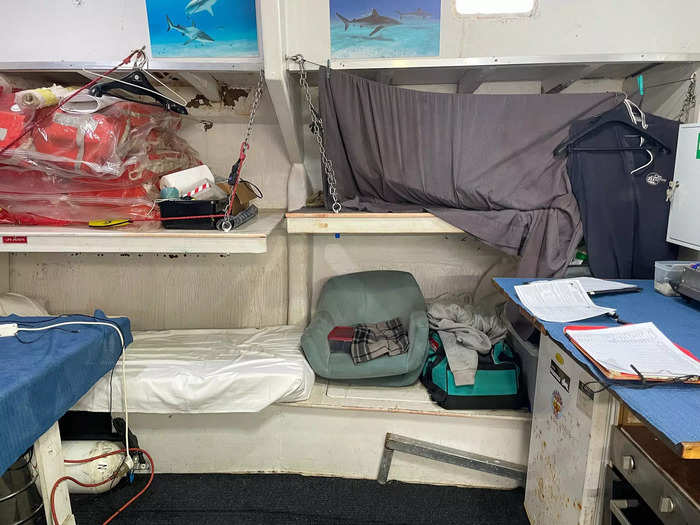
Another set of bunk beds on the Rum Runner sailboat. Monica Humphries/Insider
Behind the kitchen were two gendered bathrooms.

The door to the men's bathroom on the Rum Runner. Monica Humphries/Insider
Each bathroom had a small toilet, an even smaller sink, and a shower head. The entire bathroom was waterproof and was where we showered at the end of the day.
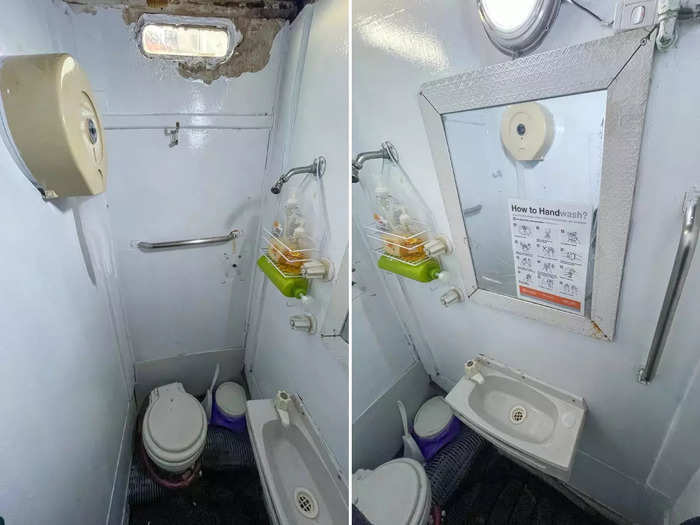
The bathroom on the Rum Runner. Monica Humphries/Insider
Past the two bathrooms, and toward the bow of the boat, were two more rooms with four beds each.
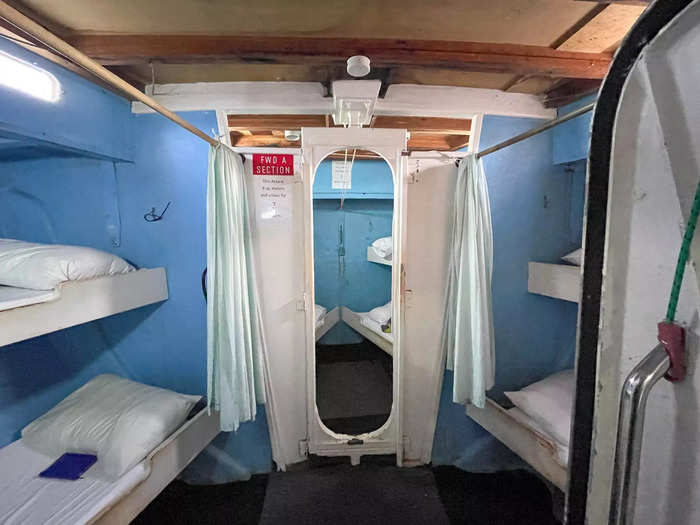
A bedroom area on the Rum Runner sailboat. Monica Humphries/Insider
It didn't come as a surprise to me when the captain mentioned the boat was built in 1984. I spotted chipped paint and wear and tear from decades-worth of saltwater.
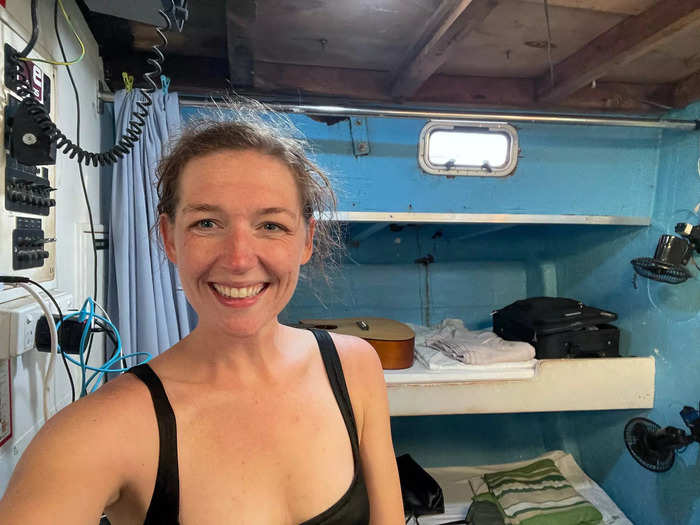
The author on the Rum Runner. Monica Humphries/Insider
I thought the galley and bed areas felt a bit cramped, but I later learned that you don't spend much time below deck while exploring the Great Barrier Reef.
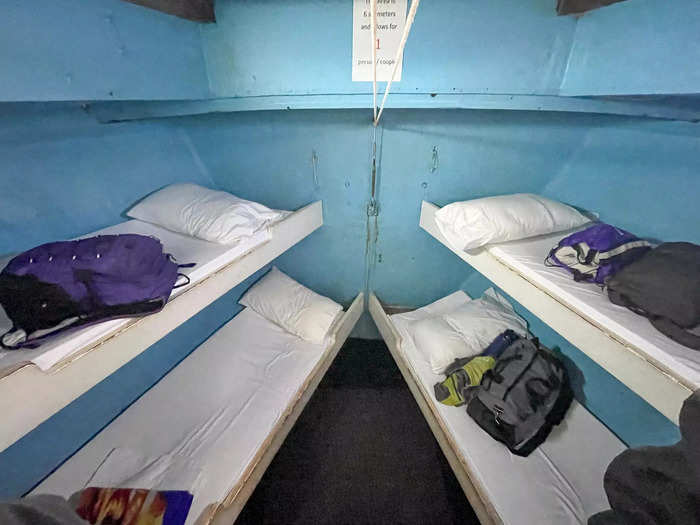
Four beds on the Rum Runner. Monica Humphries/Insider
Once I stored my belongings on my bed, I headed back up to the sailboat's deck. Here, I spotted the captain's steering wheel.
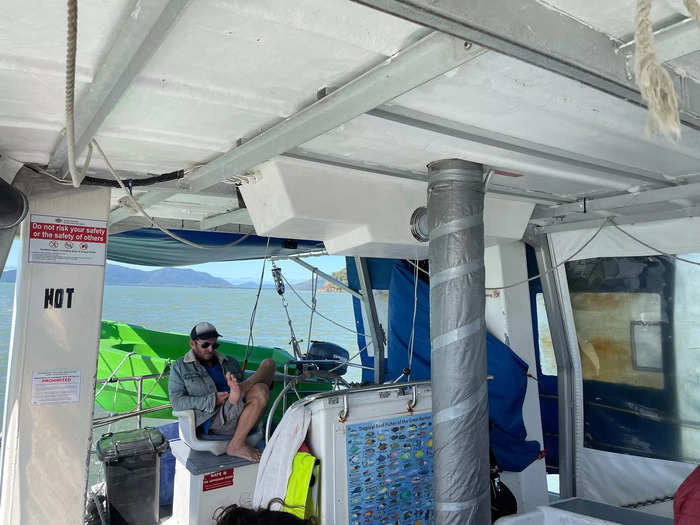
Monica Humphries/Insider
In front of the wheel was a seating area for passengers.
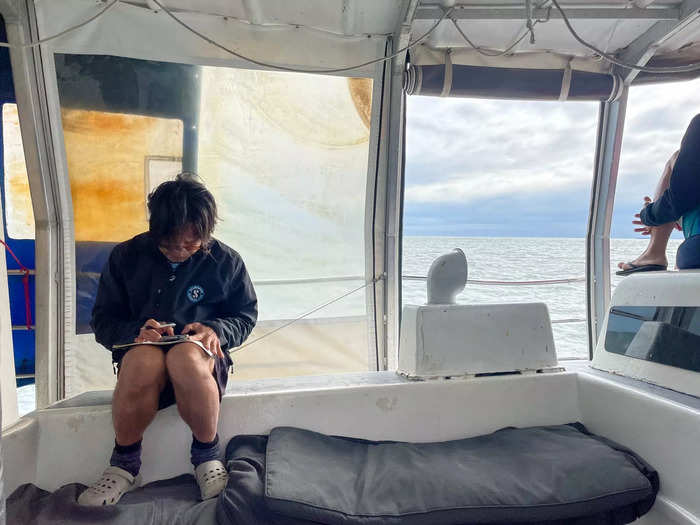
The diving instructor on the Rum Runner. Monica Humphries/Insider
All our scuba gear for the next two days was stored toward the bow of the boat.
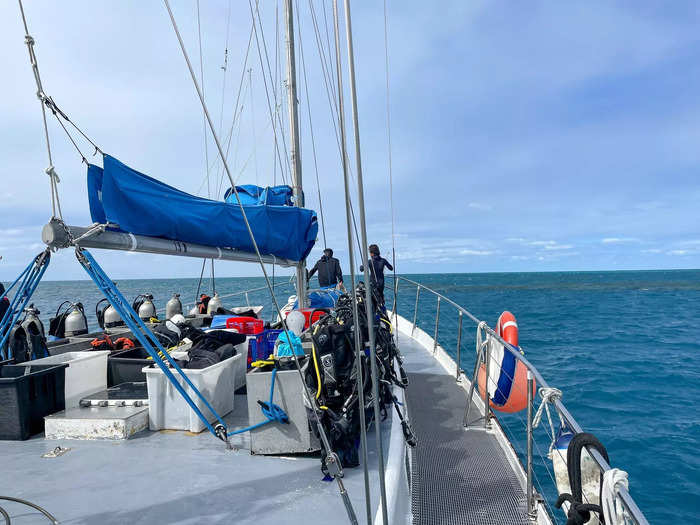
The Rum Runner sailboat. Monica Humphries/Insider
Before departing from Cairns, the captain went through a quick safety briefing at the ship's muster station.
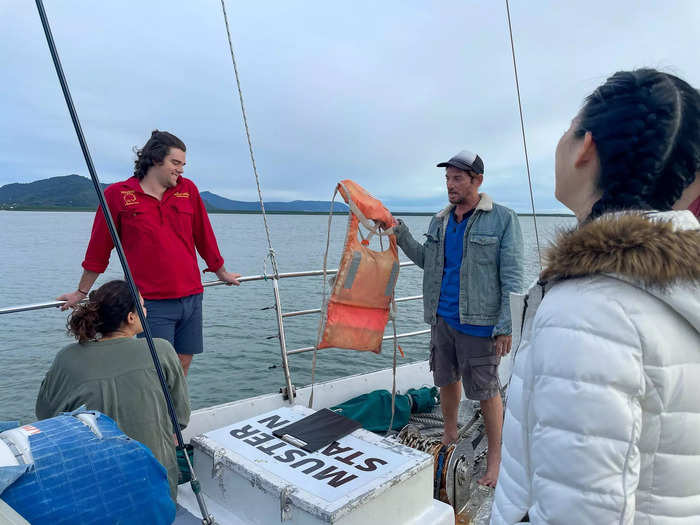
The passengers go through a safety check on the Rum Runner. Monica Humphries/Insider
We were also warned that the recent rainy weather meant it'd likely be a bumpy journey to our first reef. If we started to feel sea sickness, we were told to look out on the horizon and breath fresh air.
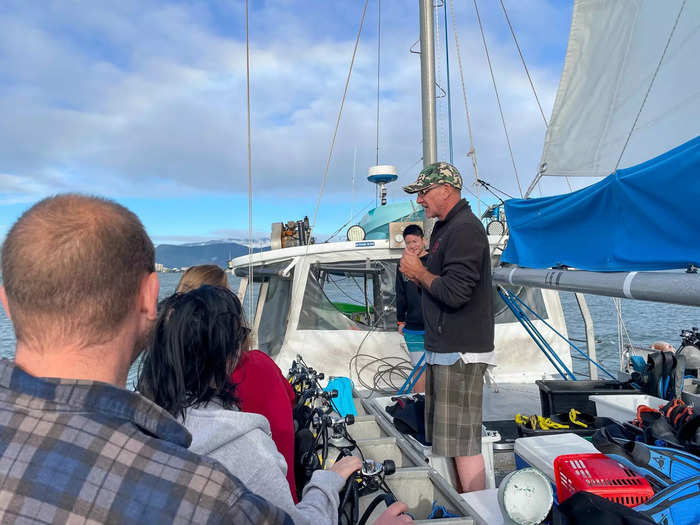
Passengers on the Rum Runner. Monica Humphries/Insider
If we felt sick, he also warned against going downstairs. "It's the black hole of seasickness," one captain said. Once the ship anchored, we were told the intense rocking would subside.
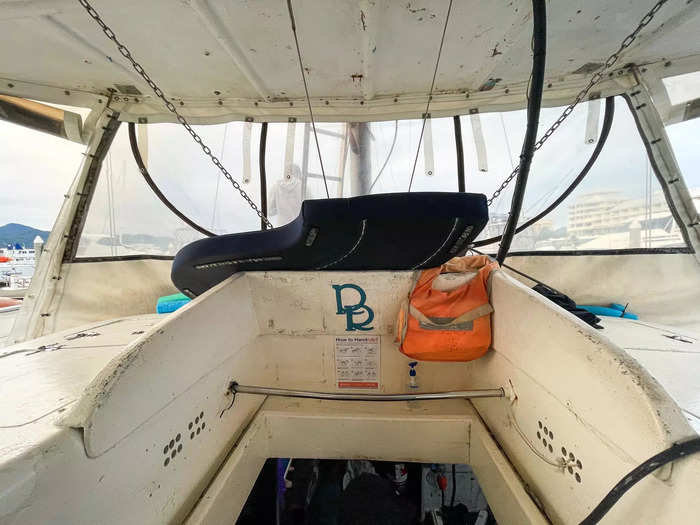
The entrance to the bottom of the sailboat. Monica Humphries/Insider
Our captains were right. I don't get seasick easily, but soon after we left the port, my stomach started somersaulting and jitters set in from my morning coffee thanks to the rough ocean waters.
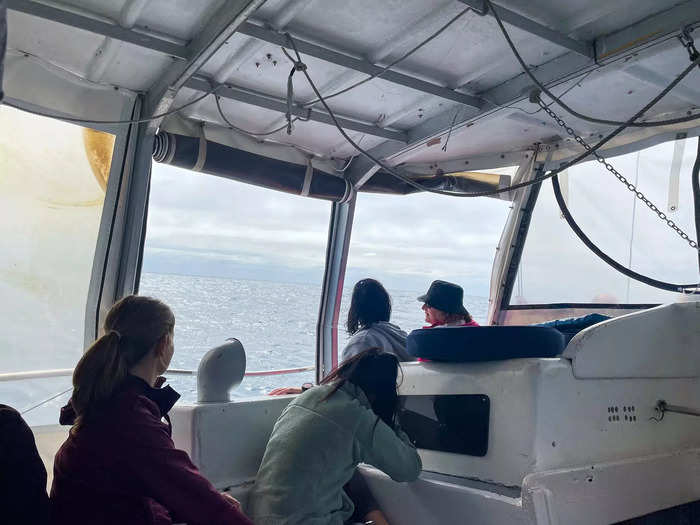
The entire group stared out into the horizon as we navigated to the first reef. Monica Humphries/Insider
After a few hours, we anchored at our first reef.
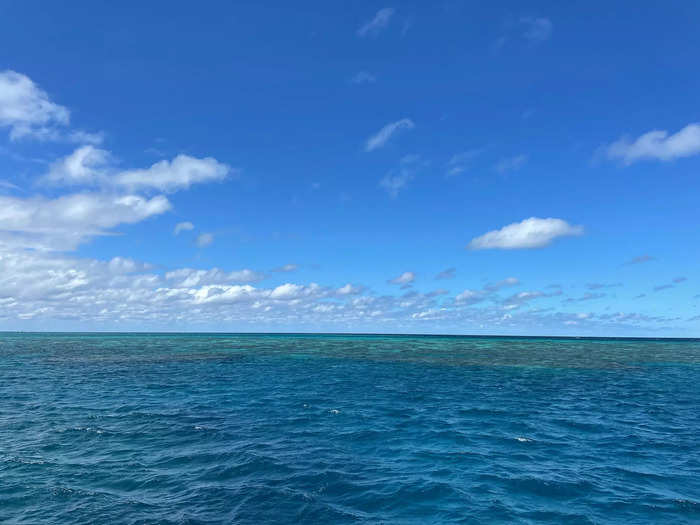
A reef in the Great Barrier Reef. Monica Humphries/Insider
The moment we arrived, I was eager to get into the water. I squeezed into a wetsuit, checked my diving gear, and before I had time to process it, I was swimming in the Great Barrier Reef.
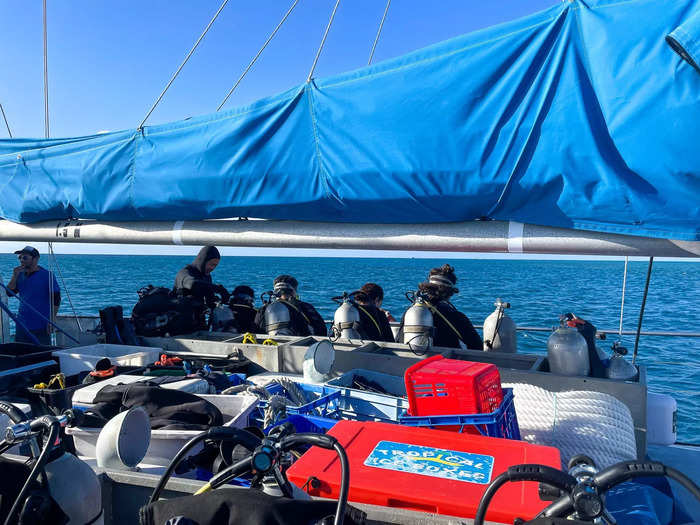
Divers on the Rum Runner. Monica Humphries/Insider
Unfortunately, the recent storms meant visibility wasn't great. But regardless, I thought floating in one of the world's greatest natural wonders was still impressive.
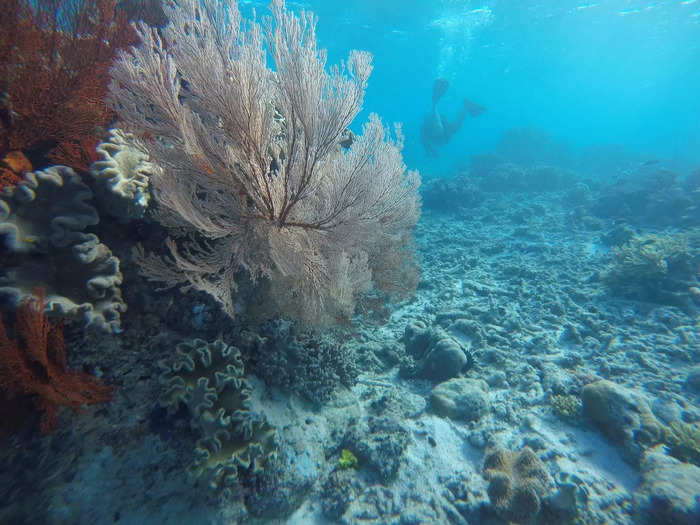
A view of the author and her dive buddy in the Great Barrier Reef. Monica Humphries/Insider
I also appreciated that the Rum Runner docked away from other boats. With just a dozen of us diving, it felt like we had the entire reef to explore by ourselves.
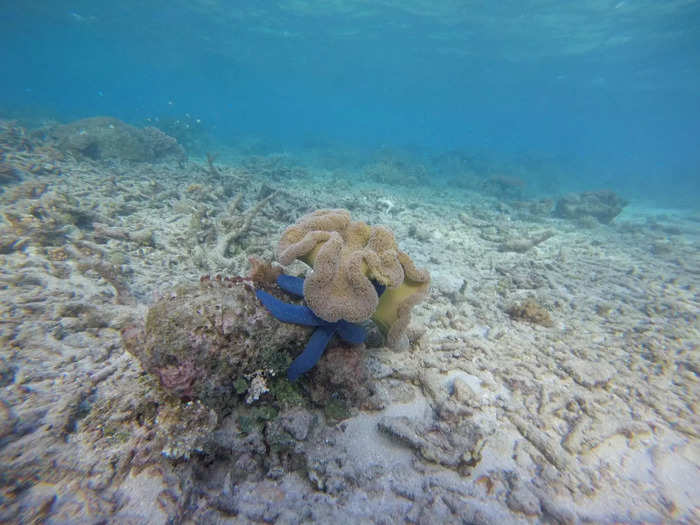
A starfish in the Great Barrier Reef. Monica Humphries/Insider
After a 40-minute dive, it was time to eat. Every dive ended with some sort of food. Lunch, a fresh fruit tray, dinner, and dessert awaited us after each dive on day one.

A lunch on the Rum Runner. Monica Humphries/Insider
The captains accommodated my request for pescetarian options and the meals we ate were simple. I had tuna wraps for lunch both days of our trip and a variety of dishes like potatoes, corn, vegetables, and salad for dinner.
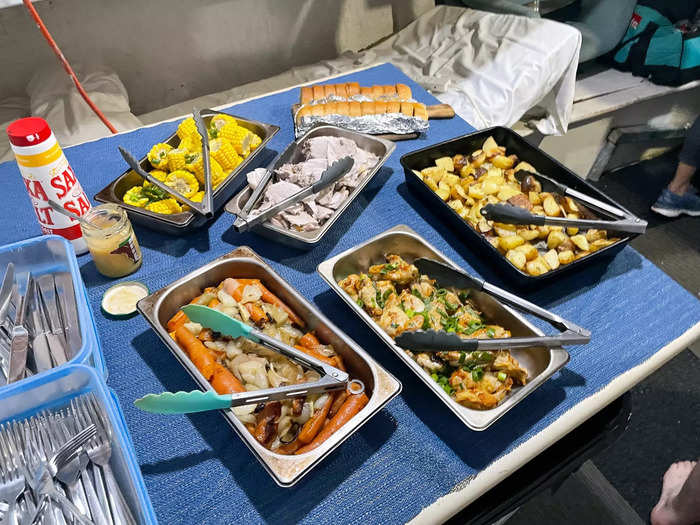
Dinner on the Rum Runner. Monica Humphries/Insider
Between dives on both days, the passengers and crew gathered near the steering wheel or sat on the deck and chatted with each another.
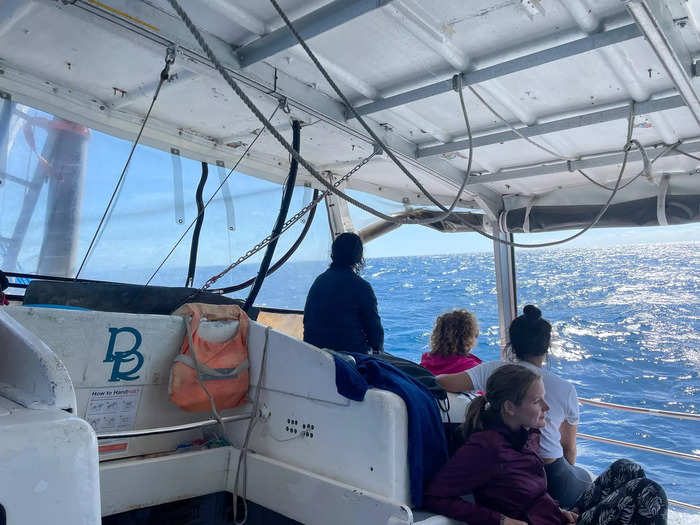
A group looks out into the Great Barrier Reef. Monica Humphries/Insider
Four women on the trip were around my age of 25. They told me about what brought them to Cairns, such as a post-graduation trip or an in-between-jobs adventure. I also chatted with a father and son from the UK, who shared footage with me of a white-tipped shark they spotted earlier on one dive. At the end of the long day, the entire group watched a vibrant sunset together.

The sunset from the Rum Runner. Monica Humphries/Insider
Throughout the trip, I spent little time below deck since it was beautiful outside. We were also usually damp from diving, so it didn't make sense to relax in the cabin and get our beds soaked.
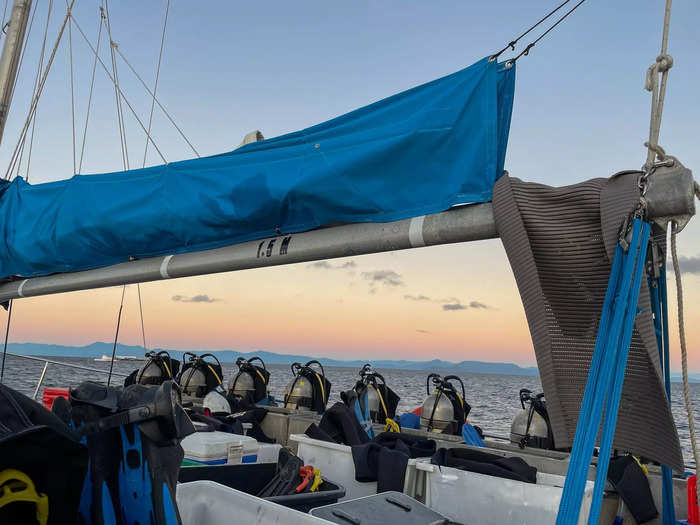
Sunrise on the Rum Runner. Monica Humphries/Insider
After we finished our first four dives and anchored at a reef for the night, we hunkered around to listen to the captain share information about the reef and the animals floating all around us.

Divers huddled around the captain at night. Monica Humphries/Insider
One by one, we all retired for the night. I crawled into my bottom bunk and was thankful for the eye mask I packed. All around the edges of the curtain, light seeped through. The ship rocked back and forth, and unfortunately, I didn't sleep as easily as I hoped.
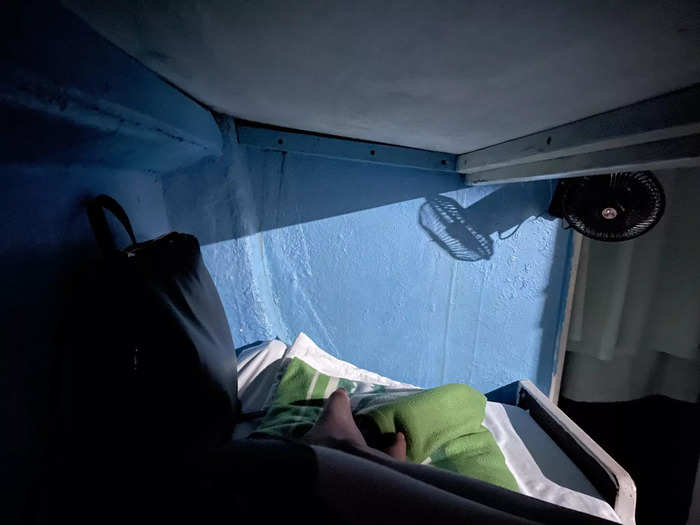
The author in her bed on the Rum Runner. Monica Humphries/Insider
On the second day, we had two more dives before we headed back to Cairns.
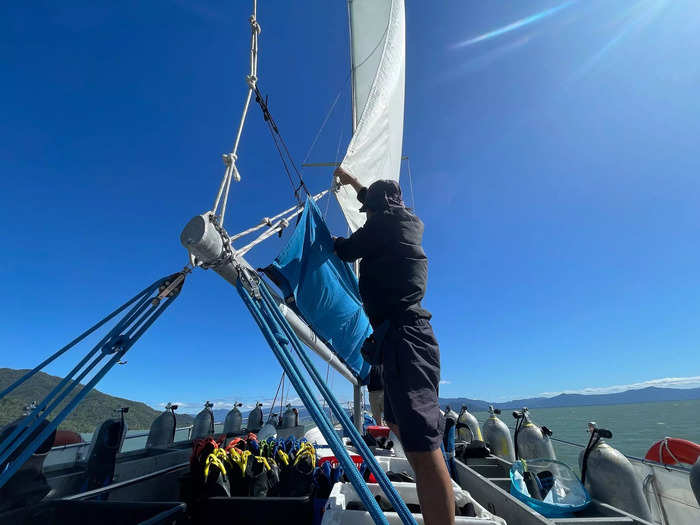
A diving instructor sets the sails Monica Humphries/Insider
These last two dives were in shallower waters. As I frog-kicked around the reef, I could spot some coral bleaching. I've read about coral bleaching, but it was entirely different seeing the devastation firsthand.
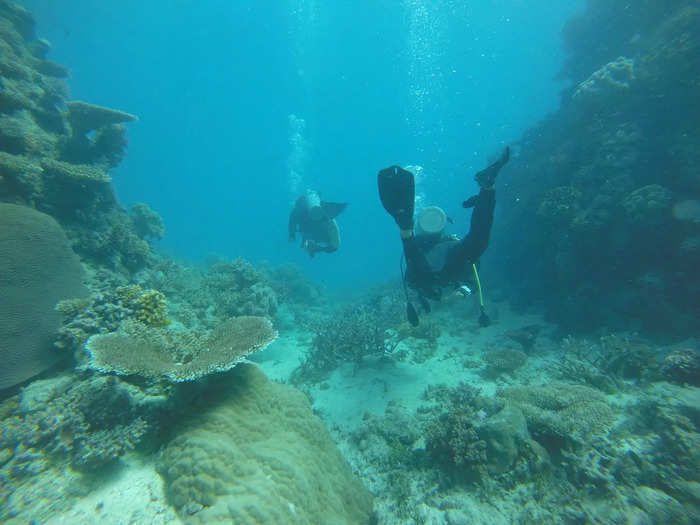
Two divers in the Great Barrier Reef. Monica Humphries/Insider
I felt thankful for the opportunity to explore the underwater reefs, and the dives reinvigorated a desire to travel more responsibly.
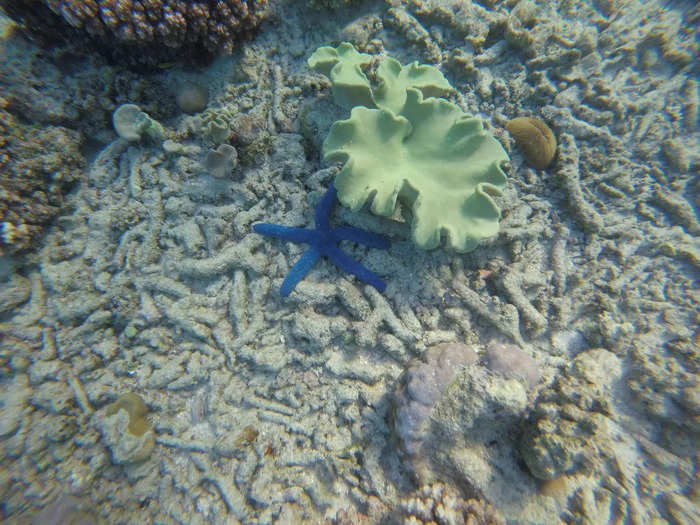
Bleached coral surrounds a starfish. Monica Humphries/Insider
As we arrived in Cairns and I disembarked the Rum Runner, I passed glitzy, mega yachts advertising similar diving trips.
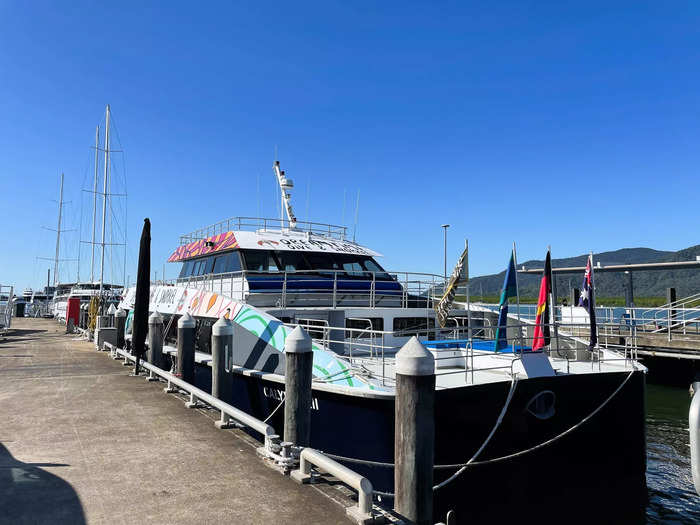
A larger ship for diving trips at the Cairns pier. Monica Humphries/Insider
But I had no regrets about boarding the no-frills Rum Runner. I walked away from it with some of my favorite memories from visiting Australia, and I thought the experience was worth every penny. The intimate setting created the ideal environment to make friends and explore a natural wonder in a less touristy way.
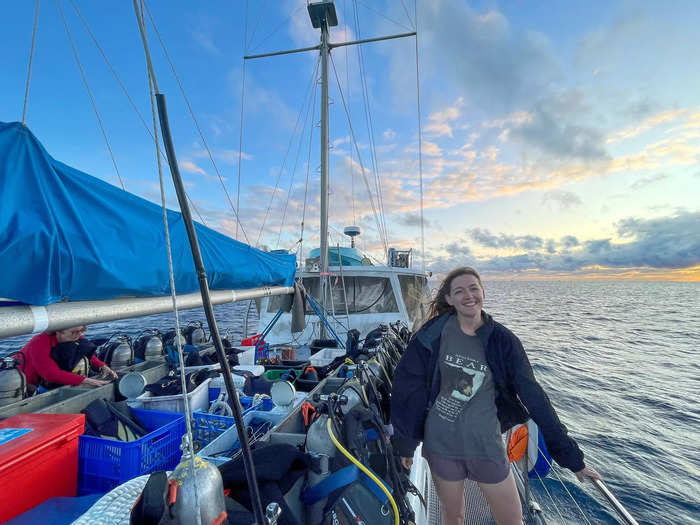
The author on the Rum Runner. Monica Humphries/Insider
Popular Right Now
Popular Keywords
Advertisement